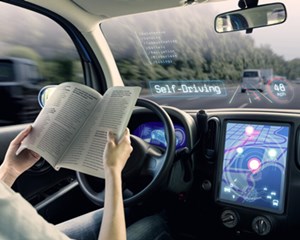As Dr Hawke puts it, "the complexity of most real-world tasks is greater than is possible to solve with handcrafted rules, and it's well known that expert systems built with rules tend to struggle with complexity.
正如霍克博士所說,“大多現(xiàn)實(shí)世界任務(wù)的復(fù)雜性都超出了手工規(guī)則所能解決的范圍,眾所周知,用規(guī)則構(gòu)建的專家系統(tǒng)往往難以解決復(fù)雜性問題。”
This is true regardless of how well thought out or structured the formal logic is."
無論形式邏輯的構(gòu)思或結(jié)構(gòu)有多好都是如此。”
Such a system might, for instance, craft a rule that a car should stop at a red light.
例如,這樣的系統(tǒng)可能會(huì)制定一條規(guī)則,規(guī)定汽車在遇到紅燈時(shí)應(yīng)該停車。
But lights are designed differently in different countries, and some are intended for pedestrians rather than cars.
但是不同國(guó)家的燈光設(shè)計(jì)不同,有些是為行人而不是汽車設(shè)計(jì)的。
There are also situations in which you might need to jump a red light, such as to make way for a fire engine.
在某些情況下,你可能需要闖紅燈,比如給消防車讓路。
"The beauty of machine learning", Dr Hawke says, "is that all these factors and concepts can be automatically uncovered and learned from data.
“機(jī)器學(xué)習(xí)的美妙之處在于,”霍克博士說,“所有這些因素和概念都可以從數(shù)據(jù)中自動(dòng)發(fā)現(xiàn)和學(xué)習(xí)。
And with more data, it continues to learn and become more intelligent."
有了更多的數(shù)據(jù),它就會(huì)繼續(xù)學(xué)習(xí),變得更聰明。”
Nicholas Rhinehart, who studies robotics and AI at the University of California, Berkeley, also backs machine learning.
加州大學(xué)伯克利分校研究機(jī)器人技術(shù)和人工智能的尼古拉斯·萊茵哈特也支持機(jī)器學(xué)習(xí)。

He says Dr Bhatt's approach does indeed show you can combine the two approaches.
他說,巴特博士的方法確實(shí)表明可以將這兩種方法結(jié)合起來。
But he is not sure it is necessary.
但他不確定是否有必要。
In his work, and also that of others, machine-learning systems alone can already predict probabilities a few seconds into the future— such as whether another car is likely to give way or not—and make contingency plans based on those predictions.
在他和其他人的研究中,僅靠機(jī)器學(xué)習(xí)系統(tǒng)就已經(jīng)能夠預(yù)測(cè)未來幾秒鐘的事件發(fā)生的概率——比如另一輛車是否會(huì)讓路——并根據(jù)這些預(yù)測(cè)制定應(yīng)急計(jì)劃。
Dr Bhatt responds that you can train a car with data accumulated over millions of kilometres of driving, and still not be sure you have covered all the necessary situations.
巴特博士回答說,你可以用積累了數(shù)百萬公里行駛里程的數(shù)據(jù)來訓(xùn)練一輛汽車,但仍不能確定是否已經(jīng)涵蓋了所有必要的情況。
In many cases, it might be simpler and more effective to program some of the rules in from the start.
在許多情況下,從一開始就把一些規(guī)則編寫進(jìn)去可能更簡(jiǎn)單,也更有效。
For champions of both strategies, the question goes beyond self-driving cars to the future of AI itself.
對(duì)于這兩種策略的支持者來說,問題不僅僅是自動(dòng)駕駛汽車,而是人工智能本身的未來。
"I don't think we're taking the right approach right now," Dr Marcus says.
“我認(rèn)為我們現(xiàn)在沒有采取正確的方法,”馬庫斯博士說。
"(Machine learning) has proven useful for some things like speech recognition, but it's not actually the answer to AI. We haven't really solved the intelligence problem."
“(機(jī)器學(xué)習(xí))已經(jīng)被證明在語音識(shí)別等方面很有用,但它實(shí)際上不是人工智能的解決方案。我們還沒有真正解決智能問題。”
One way or another, then, it seems seven-month-olds still have a lot to teach machines.
無論孰是孰非,看來機(jī)器還需向7個(gè)月大的嬰兒學(xué)習(xí)很多東西。
譯文由可可原創(chuàng),僅供學(xué)習(xí)交流使用,未經(jīng)許可請(qǐng)勿轉(zhuǎn)載。











